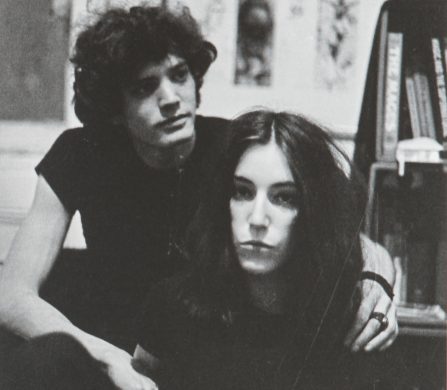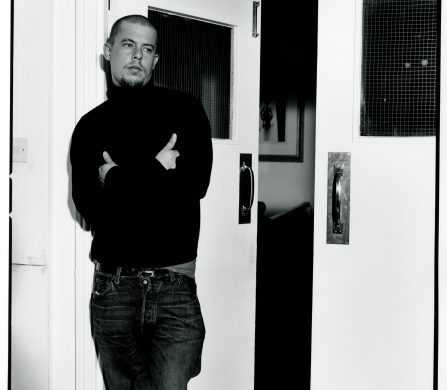 The relationship between artist and muse has long been a subject of intrigue. It is a closeness which fuels inspiration, creativity, intellect and often, lust. William Baker discovered his muse, the model Igor Stepanov -“a Latvian fantasy in threadbare Calvins”- on Instagram. What started as a click of the ‘like’ button on one of Stepanov’s topless selfies resulted in the Book of Igor: a monograph consisting almost entirely of pictures of the model shot by Baker. It documents an 18-month period spent shooting in locations ranging from Baker’s studio, to Stepanov’s native Essex, to various American cities, including L.A. – a place the model had always dreamed of going. The photographs weave together a narrative characterised by disparate desires: one carnal, the other for fame. Baker speaks to Schön! about the relationship with his muse, and what he uncovered about the strange world of social media.
The relationship between artist and muse has long been a subject of intrigue. It is a closeness which fuels inspiration, creativity, intellect and often, lust. William Baker discovered his muse, the model Igor Stepanov -“a Latvian fantasy in threadbare Calvins”- on Instagram. What started as a click of the ‘like’ button on one of Stepanov’s topless selfies resulted in the Book of Igor: a monograph consisting almost entirely of pictures of the model shot by Baker. It documents an 18-month period spent shooting in locations ranging from Baker’s studio, to Stepanov’s native Essex, to various American cities, including L.A. – a place the model had always dreamed of going. The photographs weave together a narrative characterised by disparate desires: one carnal, the other for fame. Baker speaks to Schön! about the relationship with his muse, and what he uncovered about the strange world of social media.
Book of Igor is a novel venture for Baker, who made his name as a stylist and creative director, famous for his enduring professional and personal relationship with Kylie Minogue. Novel in one sense that these images are often gritty and direct, freed from the artifice of the editorial commissions Baker built his reputation on. “Book of Igor was so liberating to do because I didn’t have that pressure of having to please anyone apart from myself,” he explains. Novel in another sense that this project – despite bearing the name of the subject – is reflective of a personal journey: the verses which accompany the pictures disclose Baker’s innermost thoughts, adding layers of complexity to the book’s immediate aesthetic appeal.
The book’s provocative content reflects the tantalizing nature of the relationship between the subject and the photographer. Yet as the verses reveal, it was never sexual, Stepanov being a straight man in his 20s, and Baker a self-described “forty-plus gay man who’s never had kids”. The book explores abstention on Baker’s part, as he grapples with a lust that is never consummated. “At the beginning I decided I was going to put myself through this,” Baker explains. It was, he admits, torturous. He describes the book’s purpose as documenting the journey a relationship undergoes, where “lust is quite temporary and friendship is still there”.

During the time spent together, Baker grew aware of some profound generational differences with his subject. “In all the time I have spent with Igor, I have never felt so young or so old.” Stepanov became an embodiment of the Instagram generation, inhabiting a world where ‘likes’ are treated as currency. Baker is no stranger to social media, but seeing just how entrenched Stepanov was in this digital world was nonetheless revelatory (before meeting him, Baker had never heard of Snapchat).“When I was with him, he just lived on his phone all the time. It was as though he couldn’t really exist outside of it. It was so weird.”
It is this alternate world that Baker investigates through his portrait of Stepanov. He believes that the constant need for validation through ‘likes’ is ultimately “destructive” and “dangerous”. Many are guilty of comparing themselves to someone on social media; indeed this is something the photographer himself admits to. Baker wanted to highlight the disparity between Stepanov’s online persona and real-life one in order to demonstrate that people are more multi-faceted than the image they project on social media. At times Stepanov is highly sexualised, framed as an Adonis of the Internet era. In other photographs, he is shown in his natural state, laid-back and seemingly unaware of the camera’s presence. A voyeuristic image shows Stepanov asleep: stripped of his steely gaze and at his most vulnerable, the model is humanised. It is an image which enables a very different kind of intimacy to the erotic topless photos, and creates a three-dimensional portrait of a young man who at times seems little more than a pixelated construct.
 Photos of Stepanov with his family in his humble hometown of Ilford also paint a tenderer picture. His mundane surroundings and modest home come as something of a surprise, and to an extent dissolve the facade Stepanov projects online, or what the book describes as the ‘impenetrable armor’ of his tattoos. “Everyone wants to escape. I think that’s what is dangerous… social media proposes this solution to our desires and wants, but they are all very superficial”. This is a pertinent point of consideration, with recent studies linking social media to low self-esteem and depression. “I think he is as insecure as anyone else”, Baker says of Stepanov. “I think the person he projects and the person he is are completely different”.
Photos of Stepanov with his family in his humble hometown of Ilford also paint a tenderer picture. His mundane surroundings and modest home come as something of a surprise, and to an extent dissolve the facade Stepanov projects online, or what the book describes as the ‘impenetrable armor’ of his tattoos. “Everyone wants to escape. I think that’s what is dangerous… social media proposes this solution to our desires and wants, but they are all very superficial”. This is a pertinent point of consideration, with recent studies linking social media to low self-esteem and depression. “I think he is as insecure as anyone else”, Baker says of Stepanov. “I think the person he projects and the person he is are completely different”.
Whilst Stepanov is glorified for his physique and upheld as an erotic fantasy, there is an underlying consideration of ‘selfie-culture’s psychological effects. “I’d ask him what he was up to and he would send a pictures of himself eating his breakfast!” Baker recalls. This communication-via-‘selfies’ is revealed at the end of the book, in a series of photos Stepanov sent to Baker. “He feels a lot. He’s very smart. But you have to drag it out of him. He communicates a lot more easily through Emojis and pictures than actually discussing his feelings”.
The implication that this new form of communication is usurping language is disquieting. Baker cites the recent closing of the clubs in London as a product of this: immersed in their online bubbles, “people don’t talk anymore. All that interaction we had, it’s getting less and less”. In this sense, Book of Igor not only plays into the fantasy of social media; it also points to the void its rise has created.
Book of Igor is available worldwide here.
Words / Daisy Schofield
Follow her here.
Discover the latest issue of Schön!.
Now available in print, as an ebook, online and on any mobile device.


















